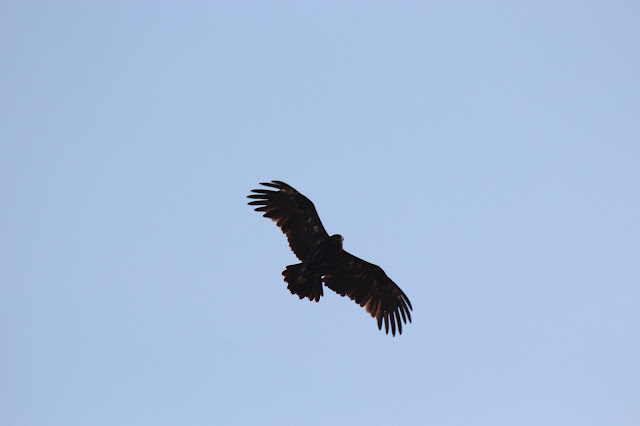Saligao Zor or spring in konkani is an awesome place to spot forest birds and is on the itinerary of every birdwatcher paying a visit to Goa, especially for the roosting Brown Hawk Owls. The Zor is surrounded by evergreen hill forest. The stream has made a course in the forest and can see many other birds like the Oriental Dwarf and Blue Eared Kingfisher, other fores species like woodpeckers, minivets, flycatchers and hornbills. This post is going to be about the birds in the entrance.
At first I thought the trip was going bad. Not a call. The weather was clear and I was thought that today was a very bad day. I was about to turn back to go to another place close-by where I heard calls of the common flameback. But, then suddenly a kingfisher dived into the pool. This was a Stork-Billed Kingfisher. It sat on a branch and ate what looked to be a frog. After that it sat on a branch and fluffed up and dived into the pool again, this time it did not get anything.
After taking photos of this bird for about five minutes the place soon started bumbling with life. The calls of the Asian Paradise Flycatcher, Black-naped Monarch, White-spotted Fantail and the Grey-Bellied cuckoo were heard. Then slowly the flycatchers started becoming visible. First was the White spotted Fantail. This bird came very close and I got some very good photos of it.
Then came the Black-Naped Monarch. The Black-Naped Monarch being a elusive bird were very vocal and I could spot 5 different individuals in a small area.One Monarch (in the picture below) was on about a foot above me. Most of the ones were females.
Then other birds like the Thick-Billed and the Pale-Pilled Flowerpecker, purple, crimson and purple-Rumped Sunbirds were spotted. They too were very vocal. Then suddenly a female Asian Paradise Flycatcher flew about 2 feet near me. It caught a fly and returned to a high perch in a tree. She did this activity about 5-6 times and I thought that there was a nest in the tree. I checked but to no avail. There was a thick creeper growing on that branch and the visibility inside was very poor.
Then as I went on the right side of the pool I heard the call of the White Bellied Flycatcher. I was very near then suddenly it flew away. It was then 7:30 and other birds like the White-Cheeked and the Coppersmith Barbet, Common Iora, Tickell's Blue Flycatcher and the Black-Rumped Flameback were seen. The Sun was now well up in the sky and the Black and Brahminy Kites were soaring in the sky. Just then over the forest edge I got the fleeting glimpse of the rare Rufous-Bellied Eagle. The camera focused on the treeline and the Eagle was out of site. Then later I saw the Grey-Bellied Cuckoo.
 |
| The Zor |
At first I thought the trip was going bad. Not a call. The weather was clear and I was thought that today was a very bad day. I was about to turn back to go to another place close-by where I heard calls of the common flameback. But, then suddenly a kingfisher dived into the pool. This was a Stork-Billed Kingfisher. It sat on a branch and ate what looked to be a frog. After that it sat on a branch and fluffed up and dived into the pool again, this time it did not get anything.
 |
| Stork-Billed Kingfisher |
 |
| White Spotted Fantail |
 |
| Black Naped Monarch-Female |
 |
| Asian Paradise Flycatcher |
 |
| Tickell's Blue Flycatcher |




















